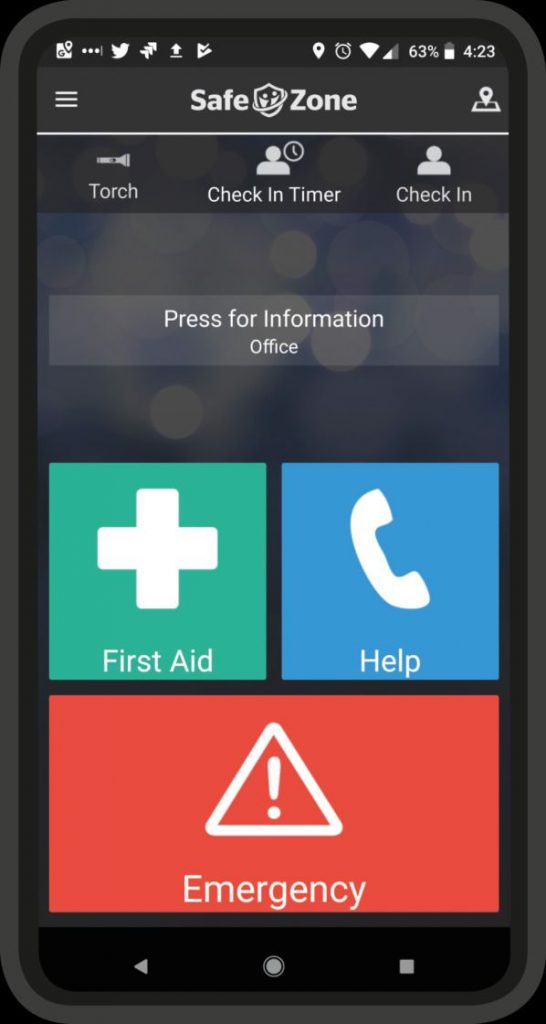COMPLEXITY builds over time and untangling old infrastructure can be so daunting that it is tempting to muddle through with old technologies and systems to apply bolt-on fixes which may not be ideal. This a perennial challenge for railways, but it is a temptation that Sydney Trains has avoided several times during recent years, to its long-term benefit, and the benefit of passengers.
Facing tough choices over how to reform fare compliance and enforcement, how to improve lone worker safety, how to speed up response to emergency incidents and alerts, and how to modernise ageing video surveillance and alarm systems, in each case Sydney Trains has opted to pioneer new approaches using the latest technologies. In doing so the passenger rail operator has achieved impressive efficiencies, reduced costs, and improved service delivery.
A key figure in the story is Mr Mark Edmonds, manager of security capability with Sydney Trains. Edmonds is perhaps not a typical security manager, either by background or temperament as he spent the first 11 years of his career working in Australian signals intelligence, including two years with the National Security Agency in America, before becoming a security and risk manager for Qantas.
As a result, he is more confident with technology than those who move into commercial security from classic police or military backgrounds, while at the same time he is particularly focused on business strategy and return-on-investment.
At Sydney Trains, Edmonds says, he found a role that particularly suited him. The network, which comes under the auspices of Transport for New South Wales, comprises urban and suburban rail services which operate over eight lines on an 813km network serving 175 stations. Pre-Covid-19, the network was carrying more than one million passengers per day.
“I ended up fitting into the technology and capability space, not because that’s my speciality - although I’ve obviously had a lot of exposure to it, particularly in signals intelligence where you get a lot of exposure to computers, communications and technology systems - but simply because I think there was a dearth of that kind of knowledge in the security sector,” Edmonds says.
When he was first invited to switch from being a contractor for Sydney Trains to taking a full-time executive role, his initial response was that he would do the job without a salary if he could just keep 1% of the savings he made - an offer he made only half in jest. It was indicative of his confidence that there were big, systemic improvements to be made.
His first major project was a video systems upgrade, integrating previously dispersed locally-monitored video surveillance into a seamless solution monitored from a central facility. It was a complex project that delivered continuing annual savings of around $A 2.5m ($US 1.93m) per annum. This process of untangling also simplified the path to further improvements in the surveillance infrastructure that have significantly boosted monitoring coverage across the whole Sydney Trains network.
Since Edmond’s initial involvement, every project he’s focused on has produced a positive return on investment.
“Previously, about 10% of penalty notices were kicked back to us, with electronic ticketing that’s much less of a problem.”
Mr Mark Edmonds, manager of security capability with Sydney Trains
A particularly complex challenge was modernising the fare compliance system. By 2014 Sydney Trains had already switched to the Opal electronic ticketing system, but inspectors still used pen and paper to write infringement notices. Copies of each notice were passed to the New South Wales government’s debt collection agency to try to recoup lost revenue. But the introduction of Opal necessitated a new approach to checking that passengers had paid the correct fare, with visual checks on tickets no longer an option.
So, Sydney Trains set out to go fully electronic for fare compliance. Edmonds and his team developed a solution that would not only allow Opal cards to be checked, but that would integrate with the penalty notice system, and they wanted to use Samsung smart phones rather than expensive, dedicated devices.
“We wanted it so that if the inspector decided to issue a penalty notice, the whole process was electronic,” Edmonds explains. “Previously, about 10% of penalty notices were kicked back to us because of illegibility or because people had given false addresses. With electronic ticketing that’s much less of a problem.”
Penalty revenues increased by around $A 1.6m in the first year after the new integrated system was rolled out. More importantly, the system also helped inspectors to be more flexible when it came to deciding whether a penalty was appropriate.
“From a customer service perspective, we wanted to give people some slack,” Edmonds says. “So, when we scanned the Opal cards, we were actually collecting the last week or two of journeys. If we could see that they were regularly tapping on, tapping off, and that in this instance it was just they were running late or they had made a mistake, we could issue a caution instead. In the old days you were either guilty and you got a $A 200 fine or we just ignored you and hoped you’d never do it again. This way we could issue a caution to the customer’s home address and it was all very official - but the customer wasn’t annoyed by being penalised for a mishap.”
The entire process of developing and introducing the solution took around nine months.
Ambitious innovation
Edmonds’ most recent project, and another first for Sydney Trains, has taken just over a year, and it is perhaps the most ambitious innovation yet. It came about through a need to improve lone worker safety following the switch to Opal card ticketing and a desire to retire an obsolete personal alarm system that was expensive to operate and maintain. That change allowed station staff to be reassigned to duties on platforms and around station concourses, instead of being limited to working inside ticket offices.
This greater staff visibility and improved interaction with customers was welcomed, but it also entailed greater risk, particularly at quieter times and in more remote locations.

To offset this, an advanced lone worker and emergency response solution was needed that would improve monitoring of staff safety, wherever team members were on the rail network.
A nine-month pilot project was launched in collaboration with CriticalArc, which was already well established as a provider of advanced safety and security management solutions to government agencies and in the global higher education sector.
In 2019, Edmonds’ team initiated a project that aimed to demonstrate whether its SafeZone solution could also provide an answer for some of the most important challenges in the rail environment.
If we could see that they were regularly tapping on, tapping off, and that in this instance it was just they were running late or they had made a mistake, we could issue a caution instead.
The potential bonus was that it offered a combination of functions under a single umbrella, rather than more costly disparate systems. These functions included targeted and mass communications, geo-location pinpointing and emergency-call. For example, the technology would allow any member of staff to request help directly from the security first responders using a smart phone app or dedicated wearable device, and it would allow the control room operators to pinpoint the precise location of that individual down to an accuracy of 2-3m, anywhere on the rail network. It would also allow alerts and notifications to be sent to team members individually, or as defined by their location or group status.
“When we did the pilot, the first thing that appealed was that we didn’t have to use our own IT,” Edmonds explains. “CriticalArc provided all of the infrastructure. If I’d wanted to put a new app on our own system and monitor it on our own IT network I’d have had to go to Transport for New South Wales, which would have taken much longer. CriticalArc’s approach meant that we could do the pilot without much risk.”
The exercise involved around 30 staff and ran in consultation with the unions. Within days, feedback on the new communications and safety capability was overwhelmingly positive, so at the end of the trial a decision was taken to go out to tender with four alternative solutions being shortlisted, including SafeZone.
“To make sure that our evaluation committee made the best selection, each competing technology was also presented to a stakeholder panel, which comprised customer service attendants, fare compliance officers, station managers, security managers and our IT specialists,” Edmonds says. “This stakeholder group was given a remit to focus on functionality, not cost. In other words, we wanted them to assess the features on offer, and select the best solution.”
Both the stakeholder group and the evaluation committee identified SafeZone as the best technology by a significant margin. They concluded that it hit the ‘sweet spot’ for performance and functionality. Importantly, it also represented best value.
During the last 18 months Edmonds and a team from Customer Service have worked with CriticalArc to implement the new system, and to communicate its value to all Sydney Trains employees. Post-Covid plans to expand the capability to other parts of the business, and to NSW TrainLink, are well underway.
Today, the technology enables rapid-response protection for employees, wherever they are on the network, and so far, it has been used to ensure successful outcomes to incidents ranging from medical emergencies to anti-social behaviour and wildfires.
Having proved that innovation can deliver substantive improvements, Sydney Trains has paved the way for adoption of this approach across the wider New South Wales public transport network - all part of continuing efforts to instil a culture of safety and to ensure that employees are valued, inspired and supported.

